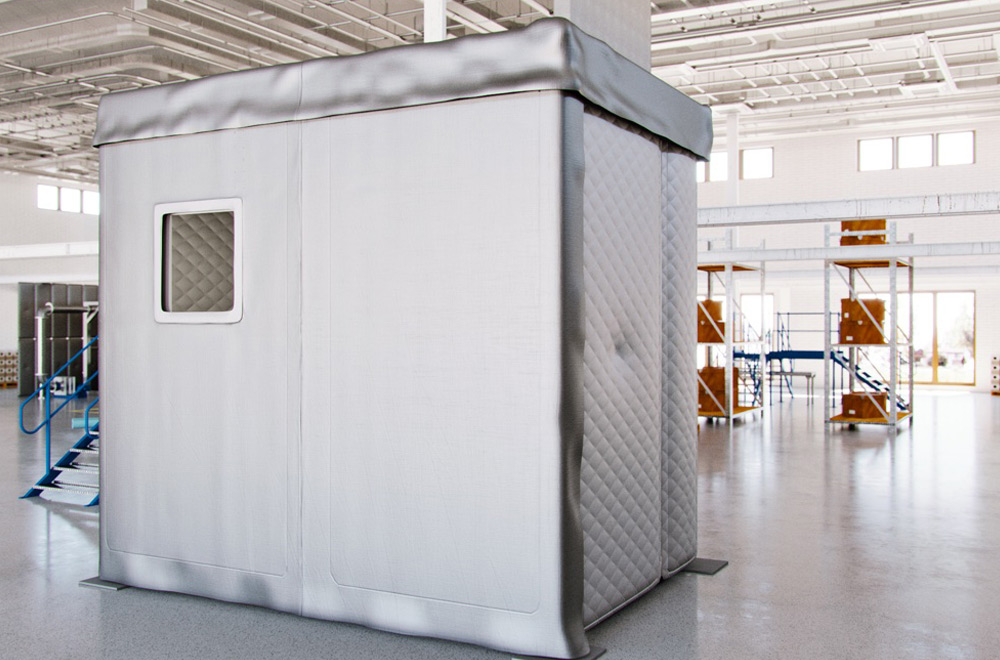In the industrial landscape, noise pollution is a prevalent issue that can adversely affect worker health, productivity, and overall well-being. To address this challenge, many manufacturing facilities are turning to acoustic enclosures as an effective solution for noise reduction. In this comprehensive article, we’ll explore the various benefits of acoustic enclosures and their significance in creating quieter and more conducive working environments within manufacturing facilities.
Introduction to Acoustic Enclosures
Acoustic enclosures, also known as soundproof enclosures or noise control cabins, are specialized structures designed to mitigate noise emissions from industrial machinery and equipment. We’ll provide an overview of the design principles and functionality of acoustic enclosures, highlighting their role in containing and attenuating noise levels to acceptable limits.
Noise Reduction: Enhancing Workplace Safety and Comfort
One of the primary benefits of acoustic enclosures is their ability to reduce noise levels within manufacturing facilities, thereby minimizing the risk of hearing damage and related health issues among workers. We’ll discuss how acoustic enclosures create quieter work environments, allowing employees to concentrate better, communicate effectively, and perform their tasks with greater comfort and safety.
Compliance with Noise Regulations
Acoustic enclosures play a crucial role in helping manufacturing facilities comply with regulatory standards and guidelines pertaining to occupational noise exposure limits. We’ll explore the importance of adhering to noise regulations set forth by organizations such as OSHA (Occupational Safety and Health Administration) and EU directives, and how acoustic enclosures facilitate regulatory compliance by reducing noise emissions to permissible levels.
Improved Productivity and Efficiency
By reducing noise levels and creating more conducive working environments, acoustic enclosures contribute to improved productivity and operational efficiency in manufacturing facilities. We’ll examine how noise reduction measures, such as the installation of acoustic enclosures around noisy equipment, minimize distractions, enhance concentration levels, and optimize workflow processes, leading to higher production output and quality standards.
Protection of Machinery and Equipment
In addition to safeguarding worker health and well-being, acoustic enclosures provide protection for sensitive machinery and equipment against the adverse effects of noise-induced vibration and resonance. We’ll discuss how excessive noise can accelerate wear and tear, cause mechanical failures, and compromise the performance and lifespan of industrial assets, and how acoustic enclosures mitigate these risks by dampening noise vibrations and stabilizing equipment operation.
Flexibility and Customization Options
Acoustic enclosures offer flexibility and customization options to suit the specific requirements and spatial constraints of different manufacturing environments. We’ll explore the various design features and construction materials available for acoustic enclosures, as well as their modular nature, allowing for easy installation, reconfiguration, and expansion as needed to accommodate changing production needs and layouts.
Integration with Environmental Control Systems
Acoustic enclosures can be seamlessly integrated with environmental control systems, such as HVAC (Heating, Ventilation, and Air Conditioning) and dust extraction systems, to further enhance indoor air quality, thermal comfort, and overall workplace conditions. We’ll examine how the incorporation of acoustic insulation materials and soundproofing techniques in enclosure design contributes to thermal insulation, humidity control, and pollutant filtration, creating healthier and more sustainable manufacturing environments.
In conclusion, acoustic enclosures offer a multitude of benefits for noise reduction in manufacturing facilities, ranging from protecting worker health and safety to improving productivity, equipment reliability, and regulatory compliance. As industries continue to prioritize noise control and occupational health initiatives, the demand for acoustic enclosures is expected to grow, driving innovation and advancements in noise mitigation technologies for safer, quieter, and more efficient industrial workplaces.
